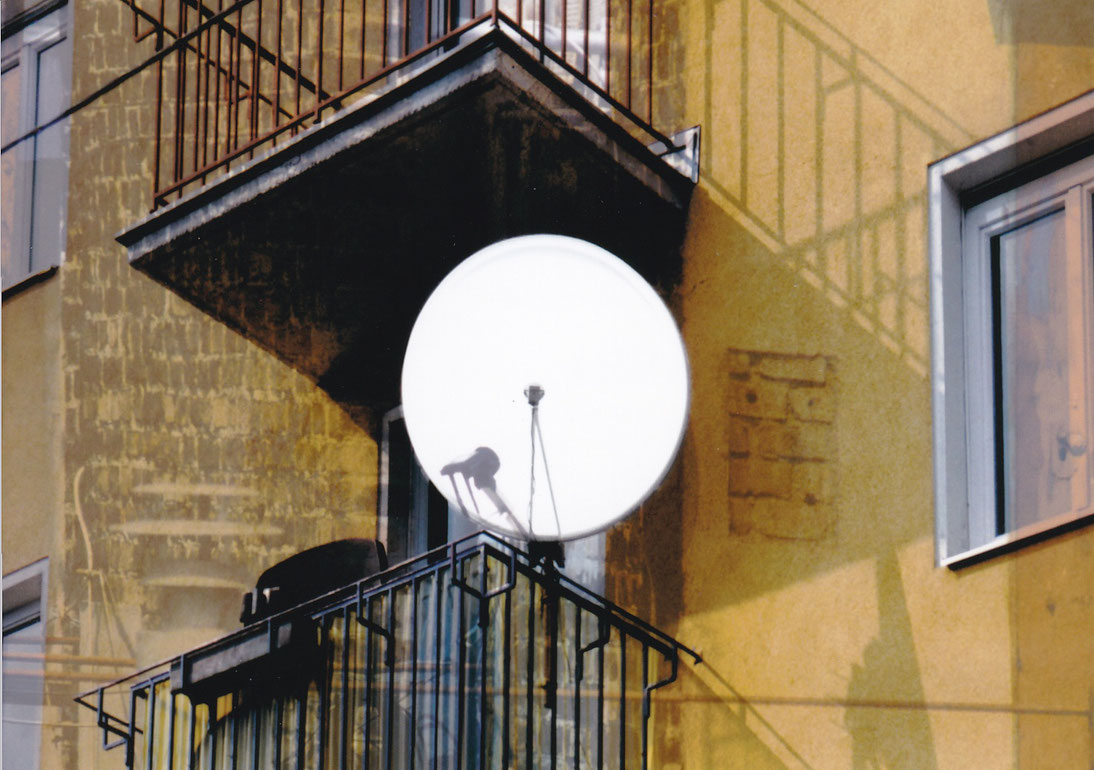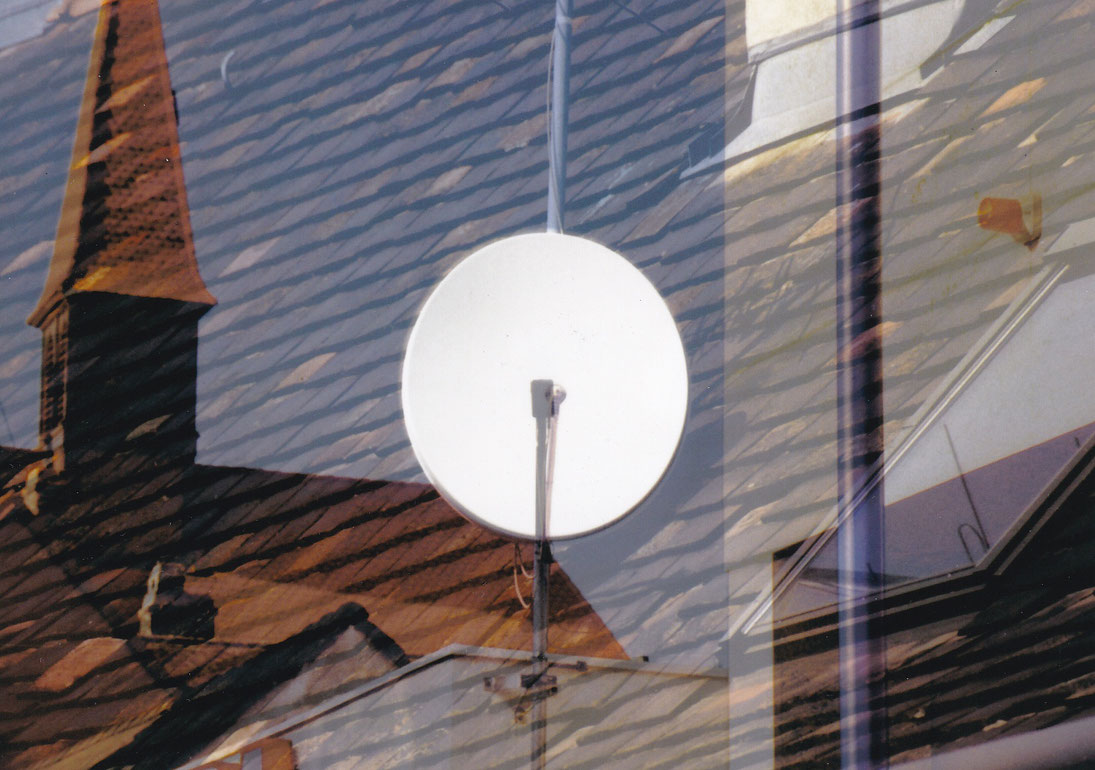Parabola
The senses do not receive information from the body´s own organs. All reflections dealing with the function of the senses return to this empty space: How to see seeing, how to hear hearing, etc.? In 1668, Edme Mariotte attempted to find out and discovered the "blind spot" in the center of the field of vision, which is the spot at which the central optic nerve is connected to the eye. The thing which allows the eye to see (ultimately the brain) is itself blind. The centerpiece of Parabola, literally at the exact center of the image, are parabolic antennas, commonly termed satellite dishes. They bring, as it is often said, the world into your living room, or at least that part of the world which can be made visible (which requires more than eyes or cameras). These antennas themselves usually remain "invisible", edited out of everyday perceptions as constantly recurring elements. On the whole, they would be relatively uninteresting if they did not give structure to the image as formal elements. The viewer can then see what they are concealing, and they provide a perspective which determines the image´s dimensions and the focal length (the parabolic mirrors appear in the center of the frame and are always the same size). They add an unreal quality to the reproduction of reality (Watzal´s video consists primarily of slow superimpositions of various photographs) and take them back to an image, a performance of planes, shapes and colors. Interesting. (Vrääth Öhner)
Parabol
1999
Austria
6 min


